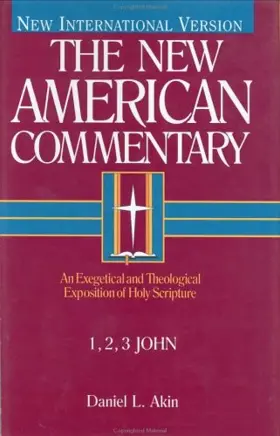

1,2, 3 John
Pages
296
Publisher
Broadman & Holman
Published
1/1/2001
ISBN-13
9780805401387
Collections
This book appears in the following featured collections.
- First Commentary Set by Brian LeStourgeon
- Ultimate Commentary Collection: NT Expositional by John Glynn
- Basic Library Booklist by Detroit Baptist Theological Seminary
- Building an NT Commentary Library by Invitation to Biblical Interpretation (Kostenberger & Patterson)
- TGC: Preaching Commentaries by The Gospel Coalition
Reviews
Great work through the text making it practical and relevant. The Logos edition prints out really well too.
Akin’s commentary concentrates on theological exegesis. It will enrich all readers’ understanding of the original text and its historical context. This is a mid-level work that emphasizes the main points of passages and doesn’t delve into the details tediously. The author provides practical, applicable exposition by demonstrating the letters’ relevance for Christians today.
[Full Review]
Akin affirms the traditional view that John the Apostle wrote both the Gospel and Letters which bear his name in the New Testament. Like most, Akin understands that John was writing in response to an attack from a specific false teaching concerning Jesus, but also a defective morality and arrogant spirituality (31). In the introduction he has a brief overview of the theology of the letters, including a paragraph on the overlooked eschatology of the letters. The body of the commentary prints the English text followed by detailed comments with Greek in transliteration. This makes for a readble commentary which will be useful for preparing to preach these letters.
[Full Review]
Akin is a good semi-technical commentary with a real commitment to exposition. Colin Kruse (PNTC, 2000) is another choice.
George Fox Evangelical Seminary Portland, OR 97223 This commentary on the Johannine epistles is part of a series, based on the New International Version, published for Southern Baptists and other evangelicals. Its author, Daniel L. Akin, is the Dean of Southern Baptist Theological Seminary. As the general editors of the series state, all of the authors of volumes in the NAC series “affirm the divine inspiration, inerrancy, complete truthfulness, and full authority of the Bible,” and the theological perspective of the commentaries is “unapologetically confessional and rooted in the evangelical tradition” (p. 7). They seek to combine conservative biblical scholarship with an attention to the preaching and teaching needs of pastors and churches. Akin’s commentary on 1-3 John is a good example of these guiding principles and their inherent strengths and limitations. In the Introduction to 1 John, which the table of contents mistakenly lists as an introduction to all three epistles (each letter actually has its own separate introduction), Akin affirms, without substantial discussion of the alternatives and problems, apostolic authorship of the three Johannine letters. He reads the prologue to 1 John (1:1-4) as requiring an eyewitness author and thinks that other views are unwarranted skepticism. Contrary to most readers of these letters, Akin sees the Elder as a dogmatically authoritative writer, consistent with his being the apostle John, one of the “sons of thunder,” who also wrote the Fourth Gospel. The letters of John are written after the Gospel, from Ephesus, toward the end of the first century, and they intend to correct a Christological misinterpretation of the Fourth Gospel. Akin describes the occasion of 1 John as a crisis of false teaching and prefers to call the Elder’s opponents “heretics.” They have left “the Christian community” (p.
[Full Review]





